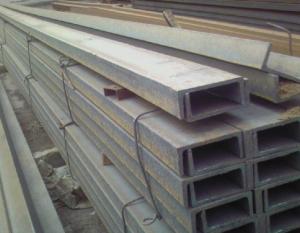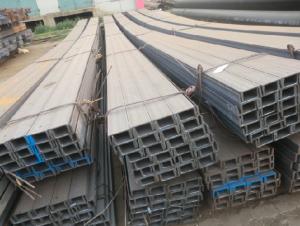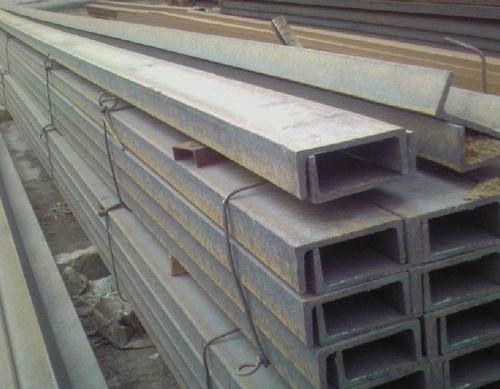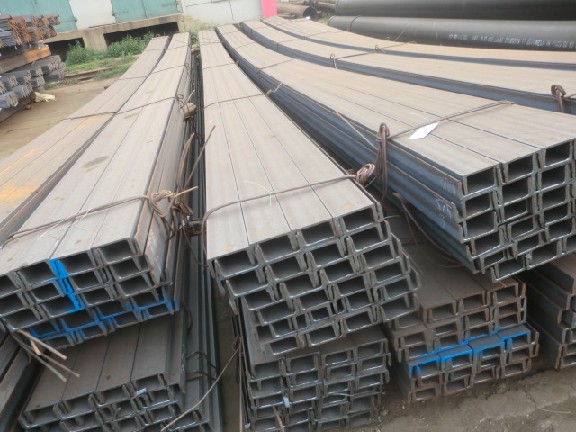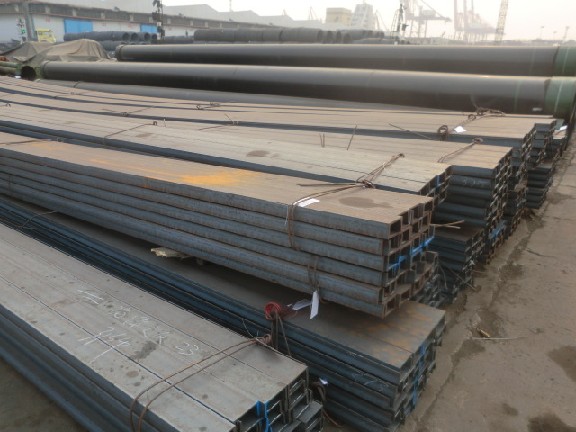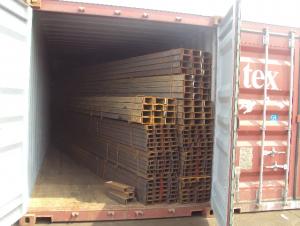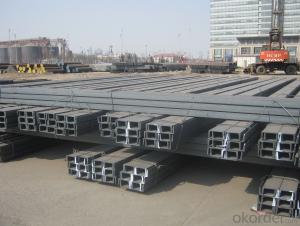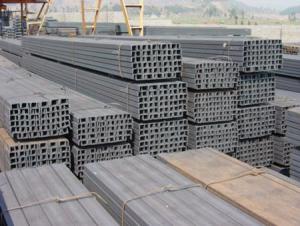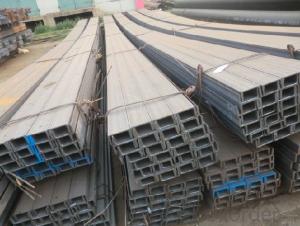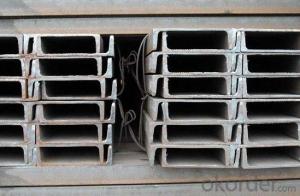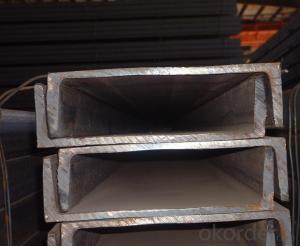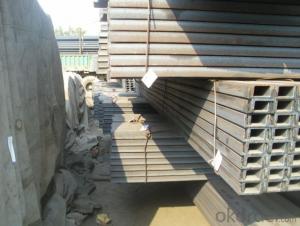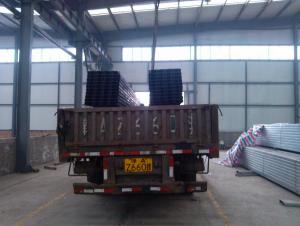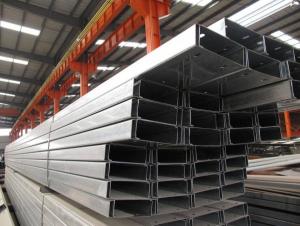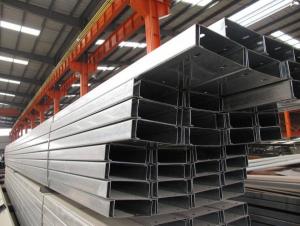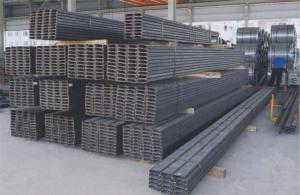MS GB Standard Steel Channel
- Loading Port:
- China Main Port
- Payment Terms:
- TT OR LC
- Min Order Qty:
- -
- Supply Capability:
- -
OKorder Service Pledge
OKorder Financial Service
You Might Also Like
Specifications of Hot Rolled Channel Steel:
1. We are definitely specializing in manufacturing and supplying channel steel.
| Standard: | GB |
| Material/Grade: | Q235 |
| Sizes: | 50mm to 280mm |
| Sales Volume/Year: | 3000MT |
| Destination Area: | Middle East, Africa, Southeast Asia |
2.Size, Length and Mass.
| Size(mm) | Length(m) | Mass(Kg/m) |
180*68*7.0*10.5 mm | 6m, 12m | 20.174 kg/m |
| 180*70*9.0*10.5 mm | 6m, 12m | 23.000 kg/m |
Package & Delivery of Channel Steel:
The steel u channel will be packed in bundle with steel wire at each end of every bundle and color marking in order to help the customer to recognize his goods more easily at sight.
And steel u channel could be loaded into 20ft or 40ft container, or by bulk cargo. If the weight of each bundle reaches less than 3.5 mt, the loading by break bulk cargo should be choosed. When the weight of each bundle reaches less than 3mt, the loading by container should be choosed.
As for the transportaion from mill to loading port, the truck will be usually used. And the maximum quantity for each truck is 40mt.
All in all, we could do in accordance with customer's request.
If you would like to get our price, please inform us the standard/material, size and quantity. Thank you very much.
- Q: Can steel channels be used for marine applications?
- Yes, steel channels can be used for marine applications. Steel channels have high strength and durability, making them suitable for marine environments where they may be exposed to corrosive saltwater and harsh weather conditions. Additionally, steel channels can provide structural support and stability for various marine structures, such as docks, piers, and offshore platforms. However, proper marine-grade coatings or materials should be applied to prevent corrosion and ensure long-term performance in saltwater environments.
- Q: Can steel channels be welded?
- Yes, steel channels can be welded.
- Q: Are steel channels resistant to pests and insects?
- Generally, pests and insects do not pose a threat to steel channels. Unlike wood, steel does not serve as a food source for these nuisances, making it less attractive for infestations. Furthermore, steel channels are more resistant to damage from termites, carpenter ants, and other wood-boring insects that can greatly weaken wooden structures. In addition, pests do not have any hiding spots or crevices to nest or breed in steel channels. As a result, steel channels are regarded as a superior choice in terms of durability and resistance to pests when compared to materials such as wood.
- Q: Can steel channels be used in architectural facades?
- Yes, steel channels can be used in architectural facades. Steel channels are versatile and durable, making them suitable for various architectural applications, including facades. They can be used to create a modern and sleek aesthetic, or to add structural support to the facade. Steel channels can be easily fabricated and customized to meet the specific design requirements of the facade, allowing for a wide range of possibilities in terms of shape, size, and finish. Additionally, steel channels provide excellent strength and stability, making them capable of withstanding the environmental stresses and loads typically encountered in architectural facades.
- Q: How is the hollow tempered glass mounted on the channel steel?
- Installation method of hollow toughened glass:1, glass cutting: the original glass is usually colorless float glass or other colored glass, sun glass, tempered glass, laminated glass, the thickness of 3 mm to 12 mm, the glass must comply with the provisions of a superior product grade, GBll614, can be used after passing inspection. Glass cutting may be done by hand or by machine, but it shall be in accordance with size requirements. Such a procedure of workers in the operation process, should always pay attention to the glass surface without scratch, er uniform, no bubbles, slag and other obvious defects.2, glass cleaning and drying: glass cleaning must adopt the machine cleaning method, because manual cleaning can not guarantee cleaning quality. Check the glass without scratching before cleaning. In order to ensure the adhesion between sealant and glass, it is better to use deionized water. In addition, in order to ensure the use of water recycling, water conservation, water filtration can be used to ensure long-term use. After cleaning the glass to light through the inspection, inspection of glass surface is water, water stains and other stains, if there is water, water stains and other stains, need to machine running speed, heating temperature, air flow, brush clearance adjustment, to achieve the effect until well done. After washing the glass should be assembled within 1 hours into a hollow glass, in addition to ensure that glass and glass between the friction and scratch, it is best to have semi-finished glass storage car, between the glass and the film.3. The assembly of rubber strip type insulating glass and aluminum strip type insulating glass. Adhesive tape type insulating glass assembly:
- Q: 18# channel perimeter
- You don't know where to use this data, in general, the characteristics of the data channel in section area and theoretical weight, I suggest you refer to GB/T 706-2008 "hot rolled steel", see annex, hoping to help you.
- Q: Are steel channels cost-effective?
- Yes, steel channels are generally considered cost-effective. Steel is known for its durability, strength, and longevity, which makes it a reliable material for various construction and industrial applications. Steel channels are designed to provide structural support, distribute loads, and enhance stability in buildings and infrastructure projects. Additionally, steel channels are readily available and can be easily fabricated to meet specific project requirements. While the initial cost of steel may be higher than other materials, its long-term benefits, such as low maintenance and resistance to corrosion, make it a cost-effective choice in the long run.
- Q: How do steel channels contribute to the overall durability of a railway bridge?
- Steel channels contribute to the overall durability of a railway bridge by providing structural support and reinforcement. These channels are designed to bear heavy loads and distribute them evenly, preventing any localized stress that could weaken the bridge. Additionally, the high strength and corrosion resistance of steel channels ensure that the bridge can withstand harsh environmental conditions, such as extreme temperatures and moisture, without compromising its integrity.
- Q: What is a steel channel?
- A steel channel is a type of structural steel shape that resembles a "C" or "U" shape, with two flanges and a web connecting them. It is commonly used in construction and engineering projects to provide support and stability in various applications such as framing, bracing, and reinforcing structures.
- Q: Can steel channels be used for decorative purposes?
- Yes, steel channels can be used for decorative purposes. Steel channels are versatile and can be used in a variety of applications, including decorative elements. They can be used to create unique and modern designs in both interior and exterior settings. Steel channels can be shaped, bent, and welded to create intricate patterns or structures, adding a contemporary and industrial aesthetic to any space. Additionally, steel channels can be finished with different coatings or paints to enhance their appearance and protect them from corrosion. Whether it's for architectural accents, furniture, or art installations, steel channels can provide a stylish and durable solution for decorative purposes.
Send your message to us
MS GB Standard Steel Channel
- Loading Port:
- China Main Port
- Payment Terms:
- TT OR LC
- Min Order Qty:
- -
- Supply Capability:
- -
OKorder Service Pledge
OKorder Financial Service
Similar products
Hot products
Hot Searches
Related keywords
